In a recent interview, President Putin himself said it was odd that Raisi’s fatal trip was in an old American-made helicopter that is difficult to maintain due to sanctions, while the other two helicopters on the same trip were much newer, better equipped Russian-made.
John Helmer is the longest-serving foreign correspondent in Russia and the only Western journalist to run his own bureau independent of any particular nation-state or commercial ties. Helmer is also a professor of political science and has served as an advisor to government leaders in Greece, the United States and Asia. He is the first and only member of a U.S. presidential administration (Jimmy Carter) to be based in Russia. Originally published at: Dance with Bears
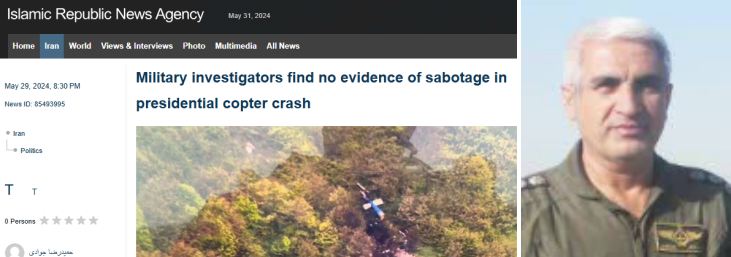
It was an annoyed Sherlock Holmes who told Dr. Watson: “You will not apply my teachings,” he said, shaking his head, “how many times have I told you that when you have eliminated the impossible, whatever remains, however improbable, must be the truth?”
It was the 1890 Arthur Conan Doyle story “The Sign of Four.”
Applying these Holmes rules of detection and inference to the situation surrounding the May 19 helicopter crash of Iranian President Ebrahim Raisi, we find that Raisi, Iranian Foreign Minister Hossein Amir Abdollahian, and 6 others The passengers on the aircraft they were on died as a result of either suicide or the pilot’s intent to kill the passengers, or both.
This did not appear to be the conclusion of Iranian Air Force commanders, who paid a condolence visit to the pilot’s family on May 21, two days after his death. Deaths (number).
But the Iranian General Staff’s second report into the deadly crash released last week ruled out weather, mechanical failure, an external missile attack, an onboard bomb, electronic sabotage and pilot error as possible causes. reportA detailed interview with Chief of Staff Raisi on Tehran TV, Gholam Hossein Esmailiand an eyewitness statement by the Ayatollah of Tabriz via telephone from the scene of the accident, Mohammed Ali Al HashemThe remaining evidence points to the experienced chief pilot, Colonel Seyyed Taher Mostafavi (Lead image, right) made three errors: first, flying into a cloud mass after ordering the other pilot to climb, second, failing to detect on radar and other instruments a sharp mountain ridge close to his flight course at an altitude of 7,000 feet (2,200 m), and third, crashing horizontally instead of keeping the nose vertical.
Hat tricks are rare, but they are never a mistake or a fluke.
Read this article to find out the forensic details of the first confirmed fatal incident. May 27.
For a summary of conflicting media reports from the Iranian military and other local sources compiled by an opposition source in London, Click to readThe Israeli fabrications and disinformation about this incident are clearly of lower quality than the Iranian propaganda. Click to compare.
Overview of helicopter convoy route
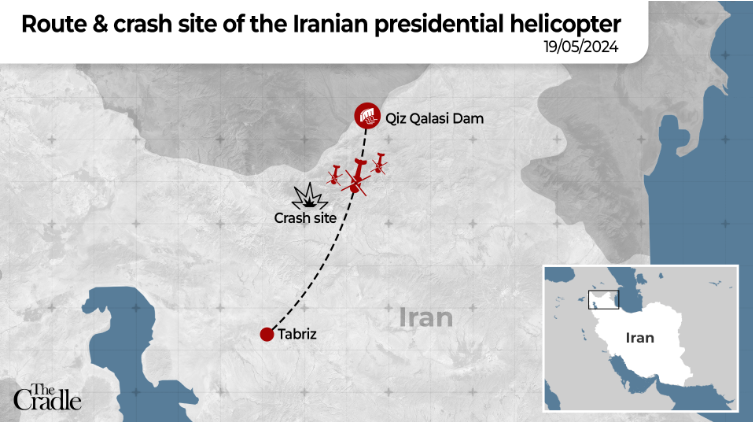
Source: https://thecradle.co/
Satellite imagery of the route and clouds at the crash site
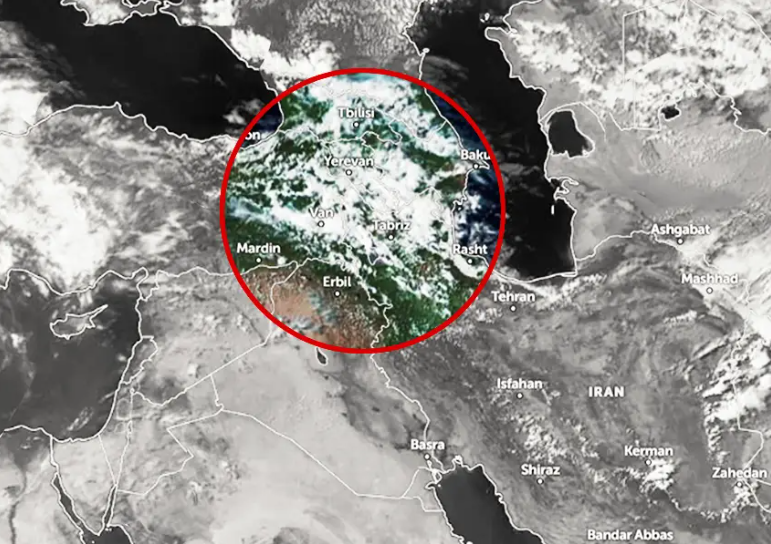
Source: https://www.iranintl.com
Iran International, an anti-regime medium based in London and Washington, financed by Saudis, concluded its coverage on May 23 with an account of contradictory media reports. This piece reached no conclusions, and so far it has not been updated.
The state news agency reportIn a report released late on May 29, Army investigators concluded that “based on sampling and examination of the helicopter wreckage and components, and the distribution pattern of debris from the aircraft, sabotage caused an explosion during flight and immediately prior to impact with the mountainside is ruled out.” Additionally, investigators carefully reviewed most of the helicopter’s maintenance documentation but found no issues that could have contributed to the accident, the report added.
“The report also revealed that the helicopter’s capabilities were within ‘allowable limits’ in terms of the maximum standard load it could carry during take-off, flight route and return flight. Recorded conversations between the flight crew indicate that the final contact between the time of the accident and the pilot becoming unresponsive lasted 69 seconds, during which no emergency declaration was recorded,” it added.
“Military investigators also ruled out jamming of communications systems or interference with frequencies on the helicopter. They found that communications with the aircraft were maintained on designated frequencies throughout the flight and up until 69 seconds before the crash. The report further stated that there was no evidence of a cyberattack being launched against the presidential helicopter.”
Missing from the second Army report are radar and black box records that would show whether Mostafavi’s pilots changed heading or course during the final 69 seconds. Claimed “The helicopter is already continuing along its predicted path and has not deviated from its designated flight path.”
Western military aviation experts comment on the training manual Technical data for the Bell 212 helicopter that Raisi was aboard. The source said the technical data the Army has seen but has not yet released includes:
— The altitude of the convoy when Mostafavi ordered it to rise above the clouds
— Aircraft speed at the time
— Course and heading of aircraft ahead and behind
— Record of course deviations of the Raisi aircraft in the last 69 seconds
— Bell 212 helicopter altimeter specifications
— Technical factors explaining why Raisi’s plane did not gain altitude after Mostafavi ordered the convoy to climb.
From geographic coordinates Published The altitude of the crash site is estimated to be 2,200 metres.
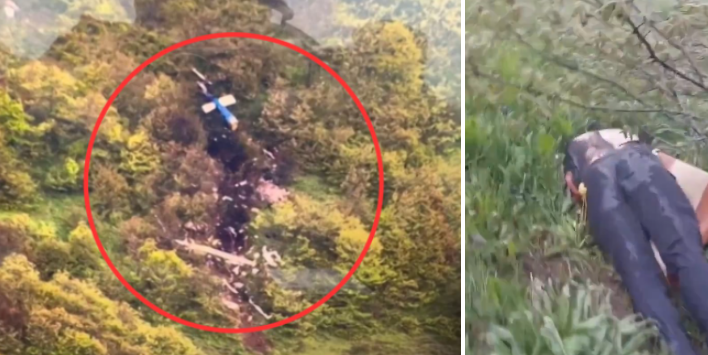
Left, drone image above the crash site. Right, video from rescuer at ground level which appears to show the body of Al-Hashem clear of the crash debris.
A witness in a third helicopter behind Raisi’s plane described the altitude, clouds and weather this way: conditions“Esmaili: There was fog on the ground, but not in the sky where we were advancing with the helicopter. But there was a small cloud over the cliffs in a small crowded area. In terms of height, this cloud was at the same altitude as our squadron. So the martyred helicopter pilot (Mostafavi), who was also the fleet commander, ordered the other pilots to go above the cloud. We were the third, behind the president’s helicopter. We went above the cloud and went forward for about 30 seconds. Our pilot suddenly realized that the main helicopter with the president on board was missing.”
Esmaili said the pilot estimated that 90 seconds had passed between Mostafavi’s radio command to ascend above the clouds and the “disappearance” of the plane: “…we no longer have radio contact with the plane, so I asked him when was the last time we had contact. The pilot replied: ‘One minute and 30 seconds ago, when the pilot (Mostafavi) gave us the command to ascend above the clouds.'”
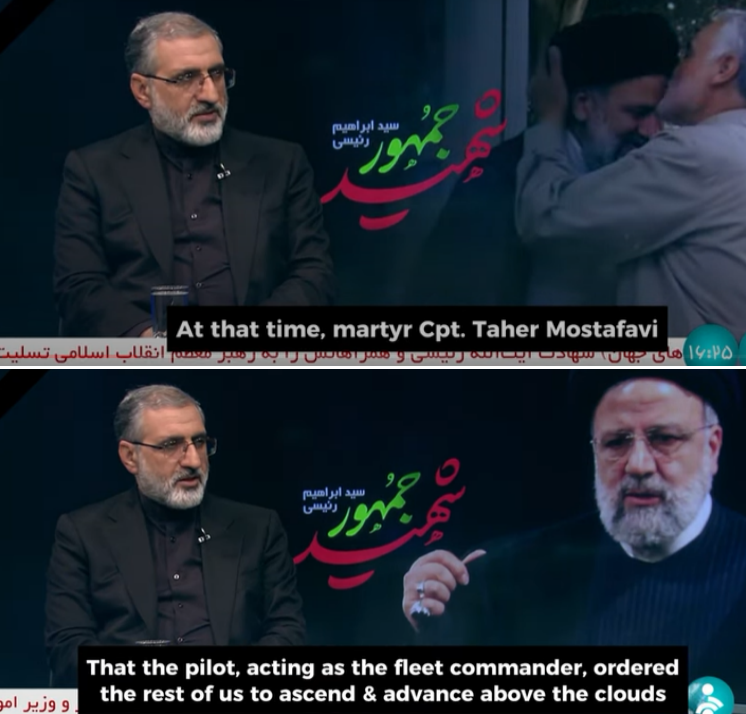
Mr Esmaili is clear: it was Mr Mostafavi who was piloting Mr Raisi’s plane and ordering the other crew members to ascend above the clouds.
Esmaeili also Revealed A first-hand account from Al-Hashem, who was thrown from the fuselage of the helicopter during the crash and was not caught in the fire that consumed the other passengers in the cabin: “After several calls to the mobile phone of the captain (Mostafavi), who was accompanying the president, someone answered the phone. It was the Friday Imam of Tabriz, Ayatollah Hashem. He said he was not feeling well. He didn’t say anything in particular. I asked him what exactly happened. He said he did not know what had happened, and when asked where he was, he said he did not know either. He simply described to us what he saw, for example, that he was surrounded by trees. When we asked about the condition of the other passengers, the Ayatollah replied that he was alone, that he could not see anyone and that he was alone.”
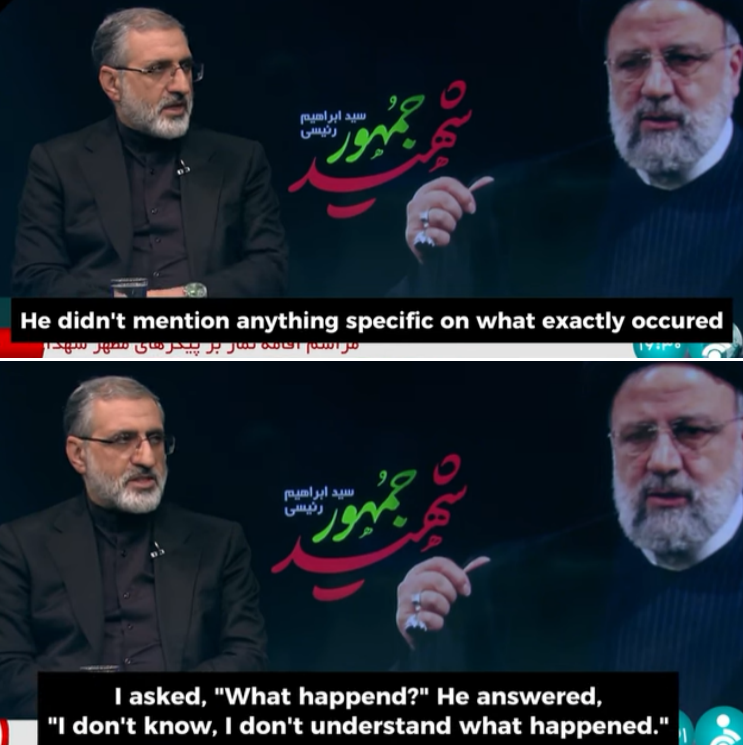
In Esmaeili’s account, he and others were able to speak to Al-Hashem over a three-to-four hour period. The telephone which Al-Hashem answered was Mostafavi’s, according to Esmaeili.
A Western aviation source commented: “We can be confident that there was no significant or alarming acceleration from throttle up, diving, or both. Al-Hashem’s final transmissions confirm this, as well as the 90-second loss of radio communication that would normally include cries for help and other conversations indicating a struggle in the cockpit in this type of emergency. I suspect the crew may have had an agreement.”
“We estimate that the (Bell) 212 was cruising at 190 kph. The last communication with the pilot was 90 seconds before the crash. We calculate that during those 90 seconds the 212 traveled 15,000 feet (4,769 meters) horizontally. We don’t know how high the group was before the command to climb was given, but we do know that the 212’s service ceiling is 17,000 feet (5,300 meters). Thus, there was plenty of room to clear the 7,000 feet (2,200 meters) elevation of the mountain where the plane crashed.”
“The 212 is equipped with a radio altimeter. This device normally stops indicating altitude at an altitude of 2,500 feet / 762 meters. There is no evidence (from Al Hashem) that the altimeter sounded or that any crew or passengers heard it prior to the crash. It is possible that the altimeter was disabled. Looking at the crash site, the 212 did not strike a sheer cliff or steep mountainside, so if the altimeter was operating or being monitored, it would be expected that it would have sounded prior to impact.”
“The key here is that the pilot told the other two helicopters to climb, but he didn’t. He went into the clouds. Did he descend or did he go into the mountains at 120 mph? Did he know that even if the altimeter was working on the current course, it wouldn’t go off until the slope of the terrain made it too late to change course? The Army says there were no course changes during the flight, but rather than descending into the clouds, did the pilot go into the clouds, maintain altitude, change course, and crash into the mountain? This would explain why everyone on board was calm.”
“The pilot knew exactly what he was doing.”
The allegation that the pilot committed suicide as part of an assassination plot has not been reported in Iranian media, two military reports, Iranian opposition media abroad, or mentioned in a Russian military blog.
With pilot Mostafavi Colonel Mohsen DaryanosIn the first days after the incident, Iranian Air Force Commander Brigadier General Hamid Vahedi and Iranian Air Force Commander Brigadier General Masoud Jafari visited their families and their homes. Shahid Rashgari Air Force Base.
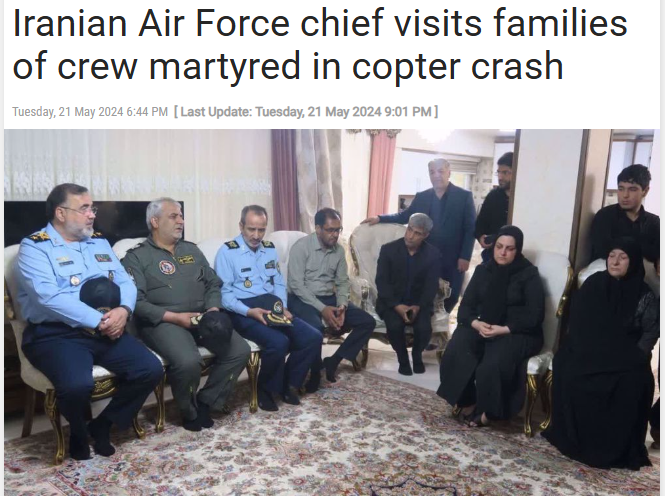
Source: https://www.presstv.ir/
It remains unclear why and how Mostafavi handed over his personal cell phone to Ayatollah Al-Hashem before the flight began. The current situation also leaves open the question of what, if any, evidence Mostafavi left on the phone.








